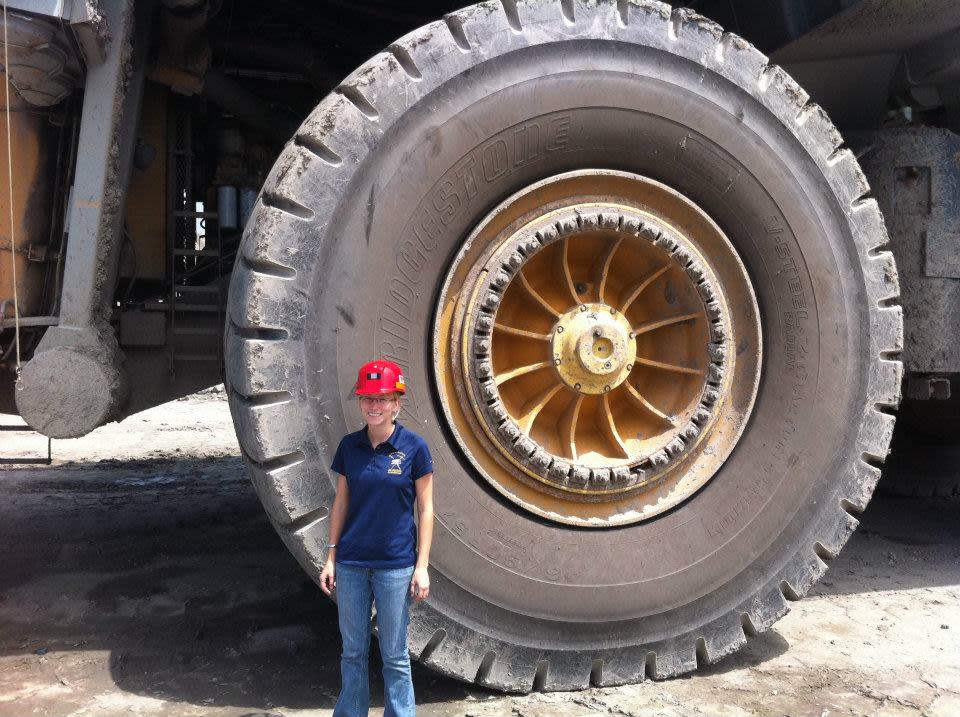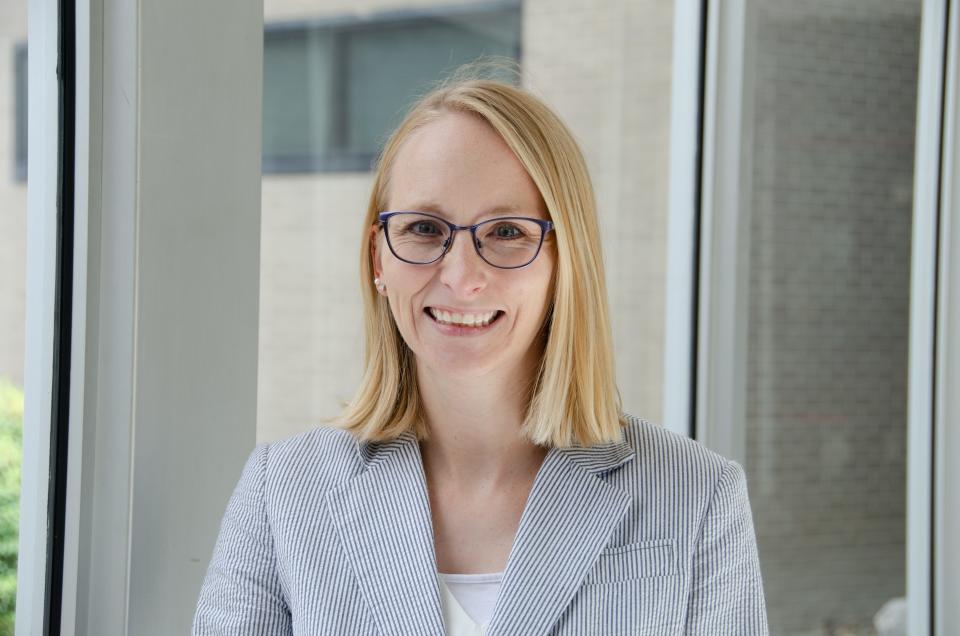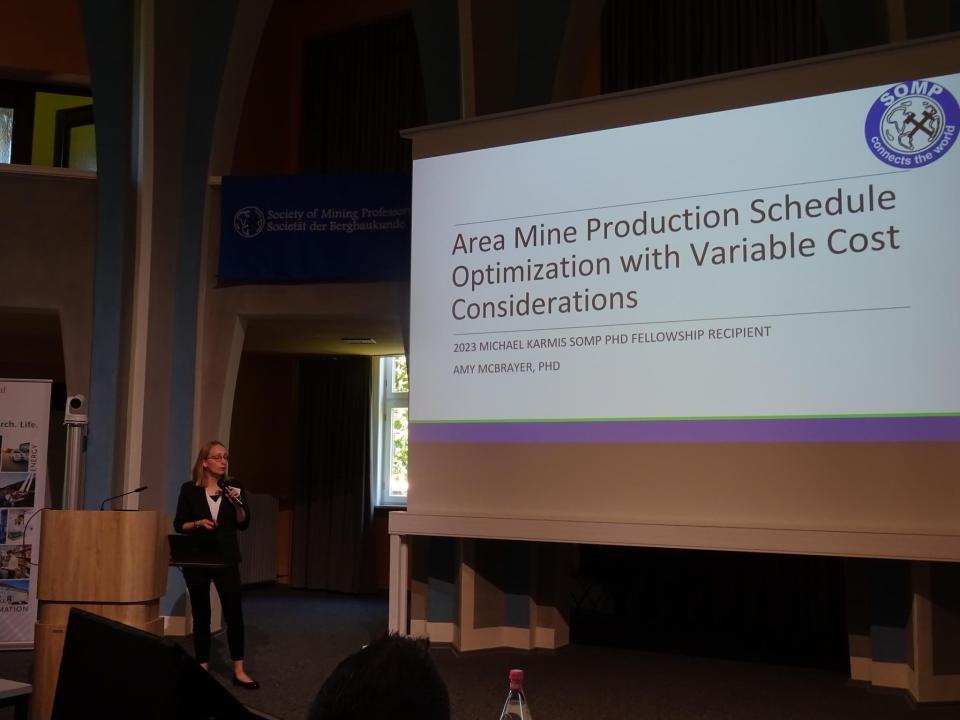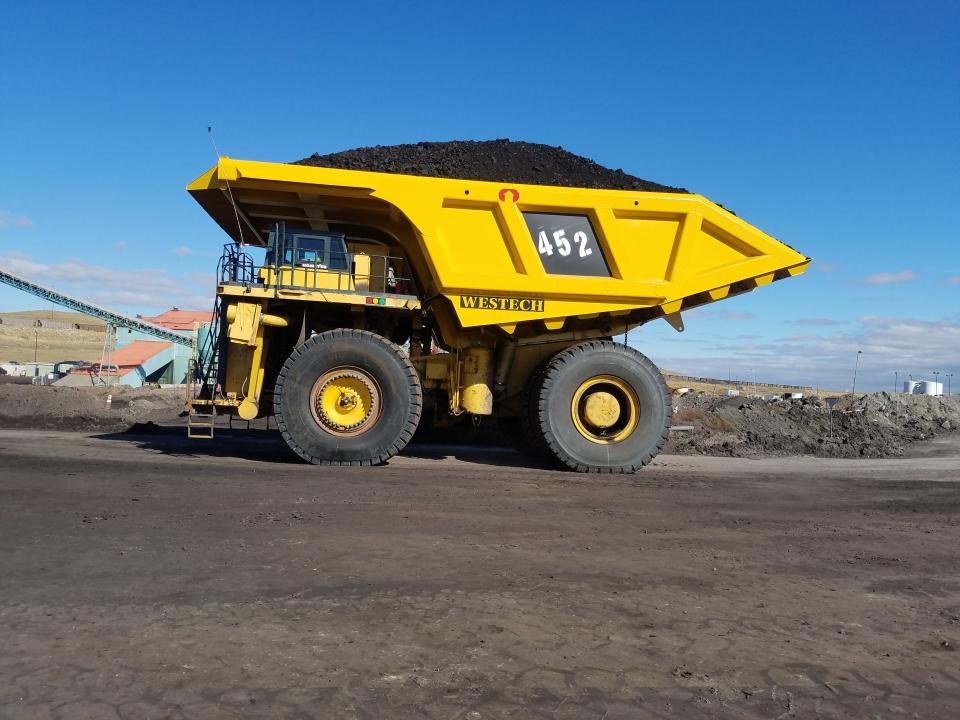West Branch grad excels in mining industry

A former West Branch valedictorian is excelling in a industry dominated by men.
Amy Burt McBrayer, 34, a 2008 graduate of West Branch High School, is a mining engineer who now teaches at West Virginia University.
She spent seven years in the field with mining companies in Wyoming's Powder River Basin − the largest coal mining region in the U.S. She has multiple degrees from West Virginia and a doctorate from the South Dakota School of Mines and Technology.
"I did production scheduling and I worked with environmental groups to ensure land reclamation was met," McBrayer said. "I designed post-mine terrain and spent the last few years in operations management and logistics. I managed segments for two of the largest mines in the basin."

McBrayer, the daughter of Lloyd and Paula Burt, is married with the three children. The Burts, formerly of Damascus, live in the Alliance area.
Earlier this year, McBrayer received the 2023 Michael Karmis SOMP Phd Fellowship Award from the Society of Mining Professors. She is the fourth person to receive this recognition since its inception in 2019.
McBrayer accepted an assistant professor's position in August at West Virginia, where she teaches the next generation of mining engineers.
Can you make a good living as a mining engineer?
Answer: Yes.
According to the U.S. Bureau of Labor Statistics, the salary of mining engineers averages $97,000 a year.
McBrayer said her interest in mining engineering started with high school homework. She wrote a paper on the mining industry, and noticed it paid well. The position was transferable between production and environmental disciplines, offering her more experience.

"My current mission is to attract students into the industry because of half of our experienced mining engineers are going to retire within the next 10 years, and we're not producing enough students to meet that need," McBrayer said. "We had a student take a job for $90,000 right out of undergraduate (education)."
Is the mining industry becoming more diverse?
Answer: Slowly, yes.
According to the Bureau of Labor Statistics and Zippia, an online job search engine, 16% of all U.S. miners − gas, oil and coal − are women. Less than 4% are coal miners. S&P Global Commodity Insights reported in May that women have made modest gains as industry leaders.
"Since I've entered the industry, we've seen an increase in companies proactively wanting diversity in our workforce − gender parity," McBrayer said. "But there were situations where I was the only woman in the room or the field."

She said mining companies now see diversity as a benefit because women and men think differently. That offers them "the best of both worlds" for tackling a problem or coming up with a design. "This ensures we are looking at all aspects (of a project)," McBrayer said.
She noted 25% of students studying mining at West Virginia are women.
What is a misconception about the mining industry?
McBrayer said many believe those in the business don't care about its impact on the environment.
She said that while that might've been the case 50 years ago, it's not these days.
According to U.S. Department of Interior, more than 2.9 million acres of coal mines have been reclaimed since 1975 − and at least 140,000 acres since 2020.
"Now, companies are looking at sustainability. How do we extract safely? How do we return that land to its best and final use," McBrayer said. "We want to make sure we put that land back to as good or better than it was."
Lastly, how important is mining to the country?
According to the National Mining Association, the mining industry provides about 2 million jobs and provides essential power and minerals for nearly every product used in homes and businesses. It has been deemed "a critical portion of our economy," McBrayer said.
"If we want do any sort of energy transition, you need domestic mining and domestic refining or a other friendly countries. Then the mining engineers determine how we extract that mineral, that metal or that energy safely."
Reach Benjamin Duer at 330-580-8567 or ben.duer@cantonrep.com. On X (formerly Twitter): @bduerREP.
This article originally appeared on The Repository: West Branch grad Amy McBrayer excelling in mining industry

